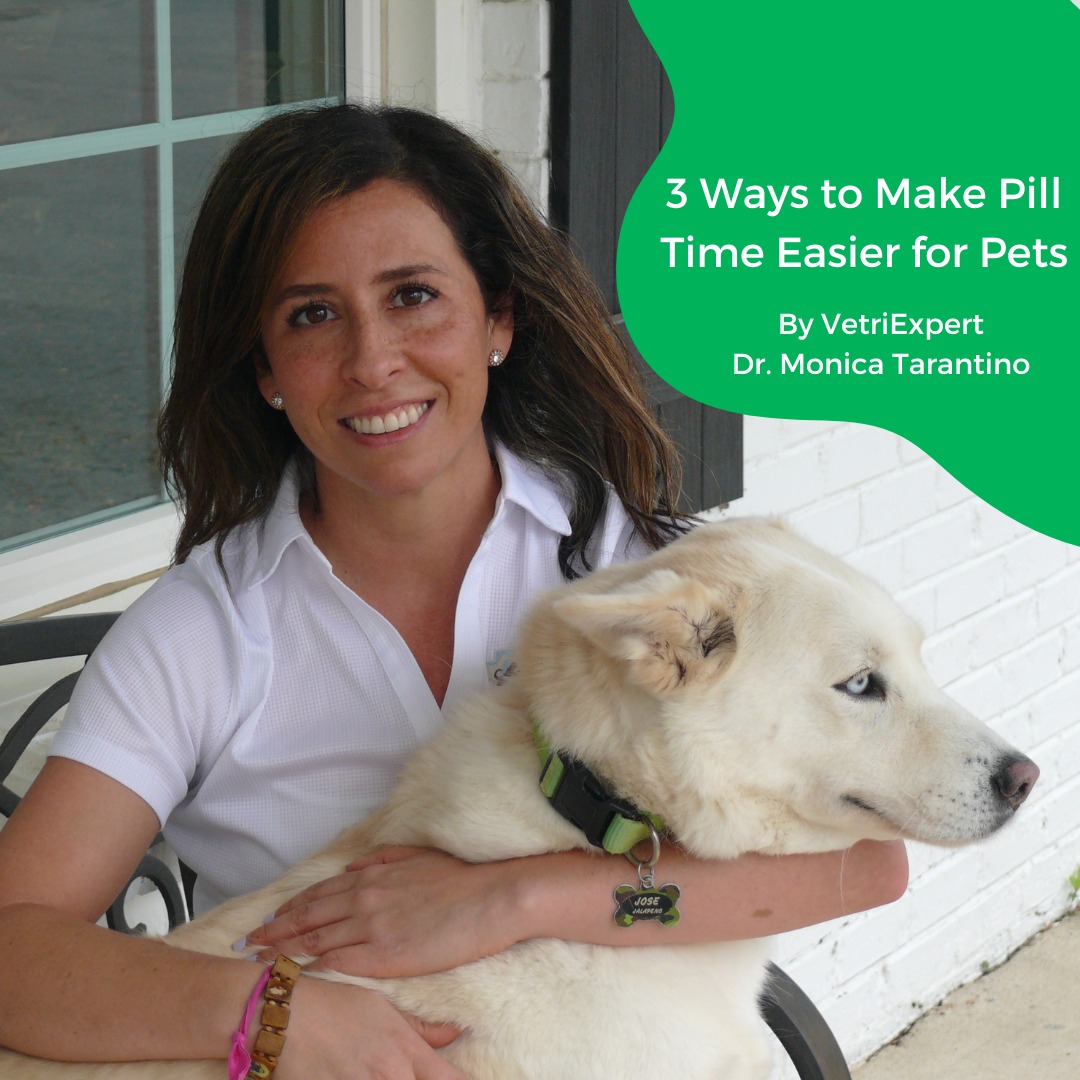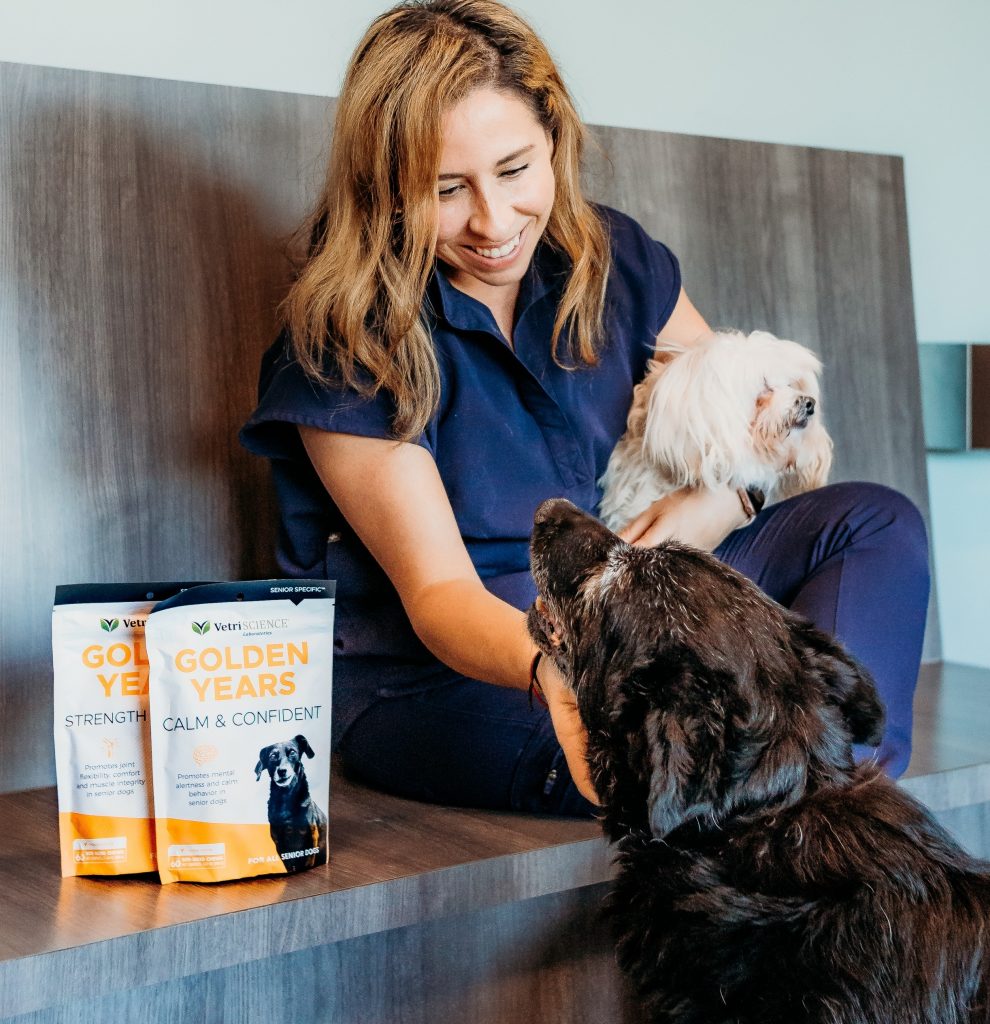3 Ways to Make Pill Time Easier for Pets
November 03, 2022
Written By: VetriScience

By Dr. Monica Tarantino
No matter how healthy our pets are, they will likely need pills or preventative medicine at some point in their life. Many dogs and cats will be on monthly chews in the form of heartworm and flea and tick prevention. Other pets will need courses of medicine like antibiotics and anti-inflammatories to help fight off infection or inflammation in the body. When pets are sick, medications can become a critical piece in helping them recover.
The problem with medications is that getting them into our pets is not always easy. Between organizing pills for multiple pets in the same home, keeping their GI tract feeling well despite pills, and dealing with pill spitters, there can be all sorts of challenges when it comes to medicating pets.
Here are three ways to make things easier in your household when it comes to medicating pets.
1. Pill-Hiding Methods
When you are looking for ways to hide pills, you want to look for three things. The first is something that is highly flavorful that can cover up any unfamiliar flavors or medicine scents. The second is something that is soft and easy to squeeze around a pill. The third is something that is easy on the stomach.
One of my favorite ways to sneak attack is through a pill-hiding treat. The most effective pill-hiding treats have yummy, familiar flavors like peanut butter, chicken, or bacon to mask bitter medicine tastes.
Treats are also helpful because they're soft enough to completely hide a pill: simply sandwich the pill or pills inside and pinch shut. A good old glob of peanut butter with medicine inside can also do the trick. Just make sure the peanut butter does not contain xylitol, which is highly toxic to dogs.
Some pill-hiding treats include the added benefit of probiotics to help replenish the natural gut flora of your dog. This helps support their GI tract, despite the medication that may upset their stomach. When pets are feeling ill, their appetite is often decreased -this adds an additional challenge to administering medicine or preventatives.
VetriScience® Pinchers® pill-hiding treats have been a game changer for my home of senior dogs and made pill time go from a struggle to an easy part of our day.
2. Pill Organizer
Oftentimes in households with multiple pets or older pets, there are a lot of different pills to give. This can be confusing, especially if multiple people are giving pills to different pets throughout the busy week.
Investing in a simple pill organizer (just like for people pills or vitamins) with different compartments for pills and pill times can make a world of difference.
In fact, one practice that has vastly helped us in our home of four senior dogs (all on pills) is to organize all pills and medications at the beginning of the week. This causes fewer mix-ups and questions as to who gave what pill at what time during the week. The pill organizer helps reduce stress for the humans and ensures each pet is getting their much-needed medication at the right time.
3. Pill Cutter
The last trick for giving pills in a busy household is to purchase a pill cutter. Historically, pet parents have used handy but dangerous items like knives to cut pills, but pill cutters are easy to use and so much safer. This is especially important for pet parents with small pets who often need meds cut into different sizes.
Pill cutters can be purchased in any drug store or online and are relatively affordable. Cutters can make quick and easy work for pet parents dealing with pills that need to be cut into smaller sections.
Dr. Monica Tarantino is a small animal veterinarian with a focus on senior and geriatric pets, and a VetriScience VetriExpert. She works as a general practitioner and chief of staff at a clinic in the Charlotte, North Carolina area where you will find her managing sick dogs and cats, performing dentals, surgeries and preventative medicine. Dr. Tarantino is also creator of the Senior Dog Revolution Podcast which focuses on senior dog topics of health and happiness. When not at the clinic or promoting senior dog health through her podcast, Dr. Tarantino can be found hanging out with her fiancé and a gaggle of rescued animals. She owns four rescued dogs and two rescued cats with the occasional foster animal just to keep things lively! You can follow along with her veterinary journeys on @seniordogdoc or at seniordogrevolution.com.
Topics: dogs, Senior Health, pinchers, General Animal Health



